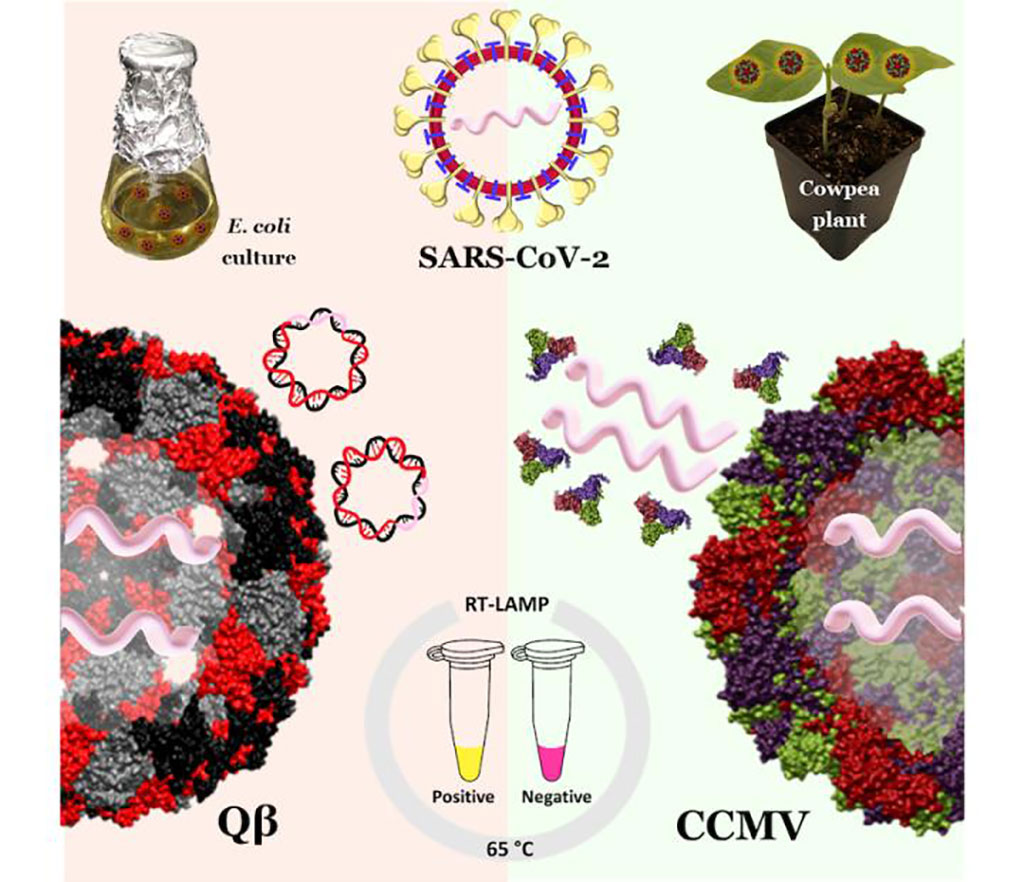Coronavirus-Like Nanoparticles Could Ensure Reliability of Simpler, Faster COVID-19 Tests
By LabMedica International staff writers
Posted on 03 Mar 2021
Nanoparticles that pass detection as the novel coronavirus could offer an easy, foolproof way to know that rapid COVID-19 tests work correctly and their results can be trusted.Posted on 03 Mar 2021
Nanoengineers at the University of California San Diego (La Jolla, CA, USA) have developed coronavirus-like nanoparticles that would serve as something called a positive control for COVID-19 tests. Positive controls are samples that always test positive. They are run and analyzed right alongside patient samples to verify that COVID-19 tests are working consistently and as intended. The positive controls developed at UC San Diego offer several advantages over the ones currently used in COVID-19 testing: they do not need to be kept cold; they are easy to manufacture; they can be included in the entire testing process from start to finish, just like a patient sample; and because they are not actual virus samples from COVID-19 patients, they do not pose a risk of infection to the people running the tests.

Image: Coronavirus-like nanoparticles, made from plant viruses and bacteriophage, could serve as positive controls for the RT-LAMP test (Photo courtesy of Soo Khim Chan)
The new positive controls are essentially tiny virus shells - made of either plant virus or bacteriophage - that house segments of coronavirus RNA inside. The RNA segments include binding sites for both of the primers used in the PCR and LAMP tests. Their work builds on an earlier version of the positive controls developed for the RT-PCR test, which is the gold standard for COVID-19 testing. The positive controls in the new study can be used not only for the RT-PCR test, but also for a cheaper, simpler and faster test called the RT-LAMP test, which can be done on the spot and provide results in about an hour. Having a hardy tool to ensure these tests are running accurately - especially for low-tech diagnostic assays like the RT-LAMP - is critical. It could help enable rapid, mass testing of COVID-19 in low-resource, underserved areas and other places that do not have access to sophisticated testing equipment, specialized reagents and trained professionals.
As a next step, the researchers are looking to partner up with industry to implement this technology. The positive controls can be adapted to any established RT-PCR or RT-LAMP assay, and using them would help negate false readouts. Plus, these positive controls can be easily produced in large quantities by molecular farming in plants or microbial culture fermentation, which is good news for translating them to large-scale manufacturing.
"With mutants and variants emerging, continued testing will be imperative to keep the population safe," said Nicole Steinmetz, a professor of nanoengineering at UC San Diego, who led the study. "The new technology could find utility in particular for at-home tests, which may have a higher rate of false readouts due to the less controlled experimental conditions."
Related Links:
University of California San Diego














